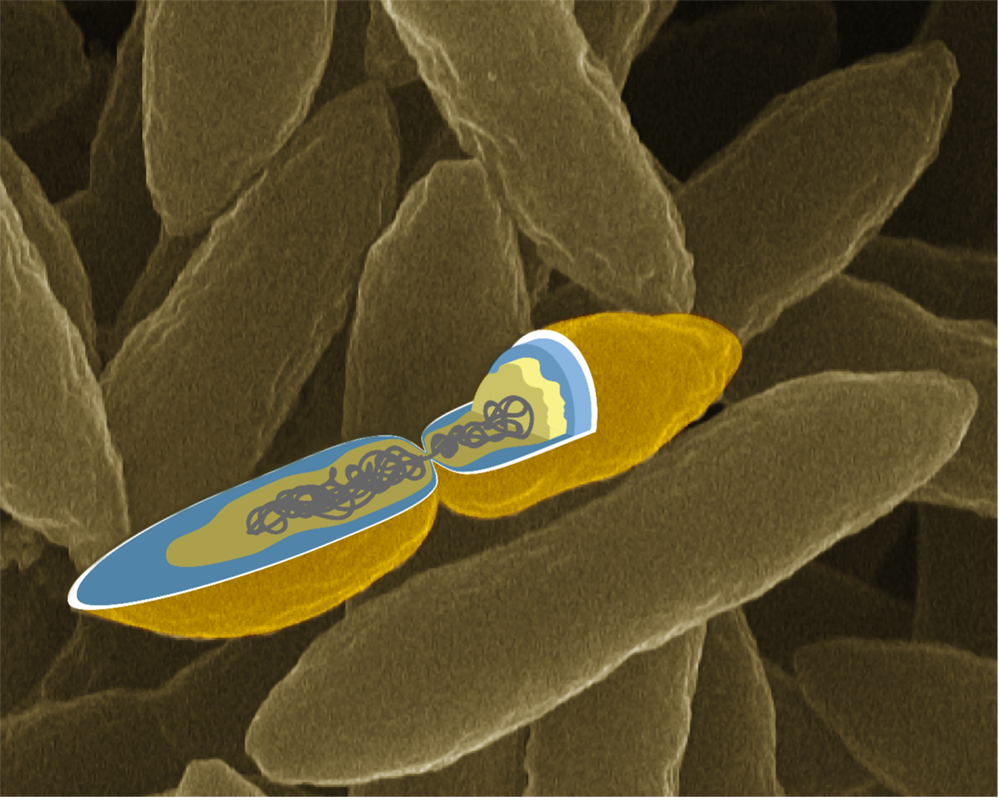Membrane-bounded nucleoid discovered in a bacterium
-Characterization of a bacterium of a novel phylum isolated from a deep subsurface environment-
Summary of AIST Press Release Dec. 14, 2020
>>Japanese
A key feature that differentiates prokaryotic cells from eukaryotes is the absence of an intracellular membrane surrounding the chromosomal DNA. KATAYAMA Taiki and his colleagues belonging to the National Institute of Advanced Industrial Science and Technology, JEOL, Ltd. and Marine Work Japan, Ltd. have succeeded in cultivation and isolation of a novel bacterium, designated RT761, from deep subsurface environments. Although typical Gram-negative bacterial cells have only two lipid bilayers (cytoplasmic membrane and outer membrane), cryo-electron tomography revealed that RT761 possesses an additional intracytoplasmic membrane. This innermost membrane appears to be completely separated from the cytoplasmic and outer membranes, and envelops and compartmentalizes the RT761 nucleoid (i.e., genomic DNA) (Fig. 1), challenging existing views of prokaryotic cell organization.
In addition to this intriguing cell structure, strain RT761 was not assigned to the previously known taxonomic groups even at the level of highest taxonomic rank of prokaryotes, i.e., phylum, and thus, RT761 was proposed as a novel species, namely Atribacter laminatus, in a novel phylum Atribacterota. Environmental gene clones assigned to this phylum are known to be widely distributed in anoxic environments, including subsurface environments where biogenic methane is deposited, such as natural-gas reservoirs and gas hydrate-bearing sediments. Thus, further ecological studies of this phylum would lead to a better understanding in global methane cycle.
Fig. 1. A novel bacterium, Atribacter laminatus strain RT761 showing an intracytoplasmic membrane (cream-colored) bounded nucleoid (gray-colored) in a cell.


